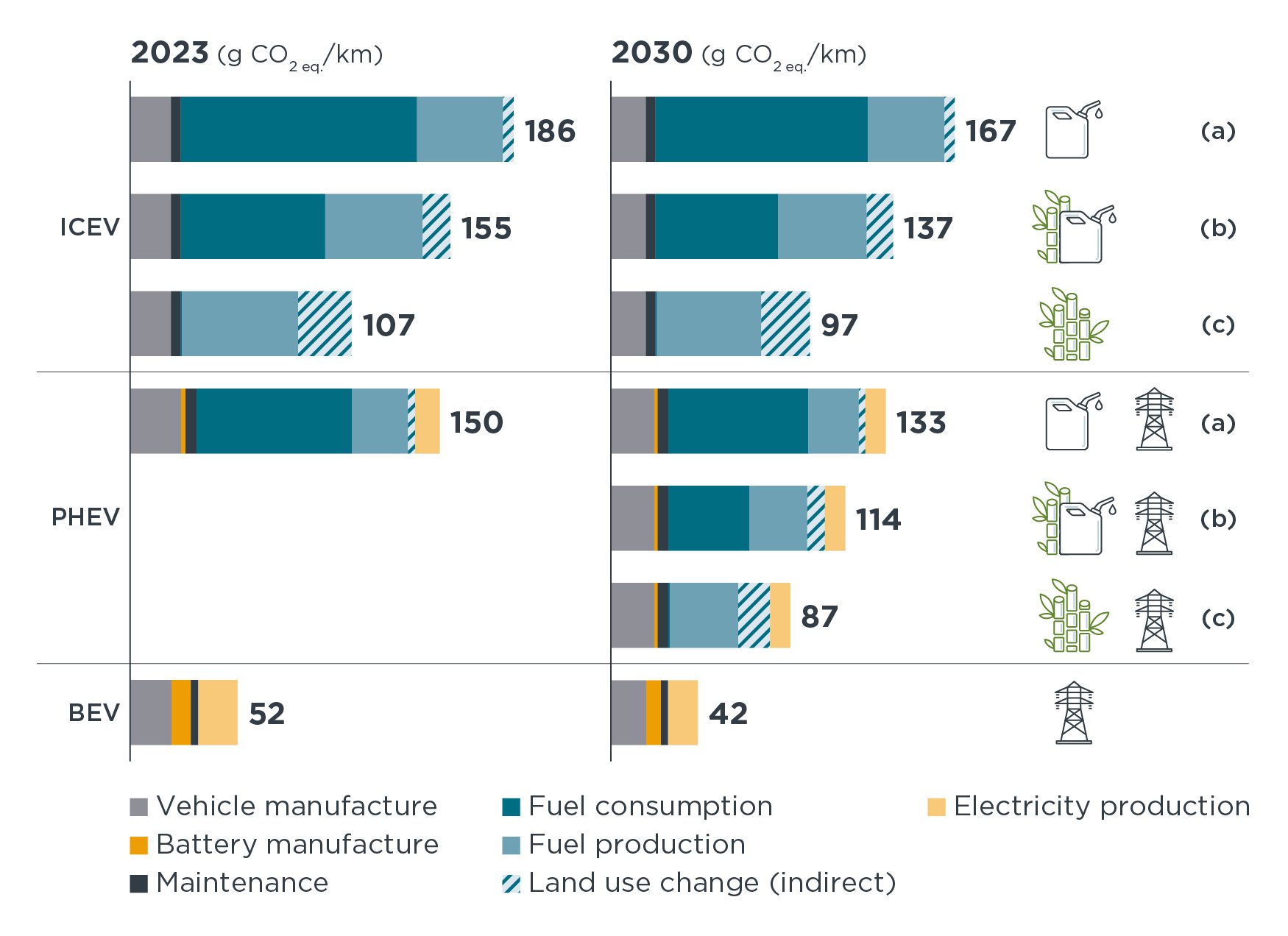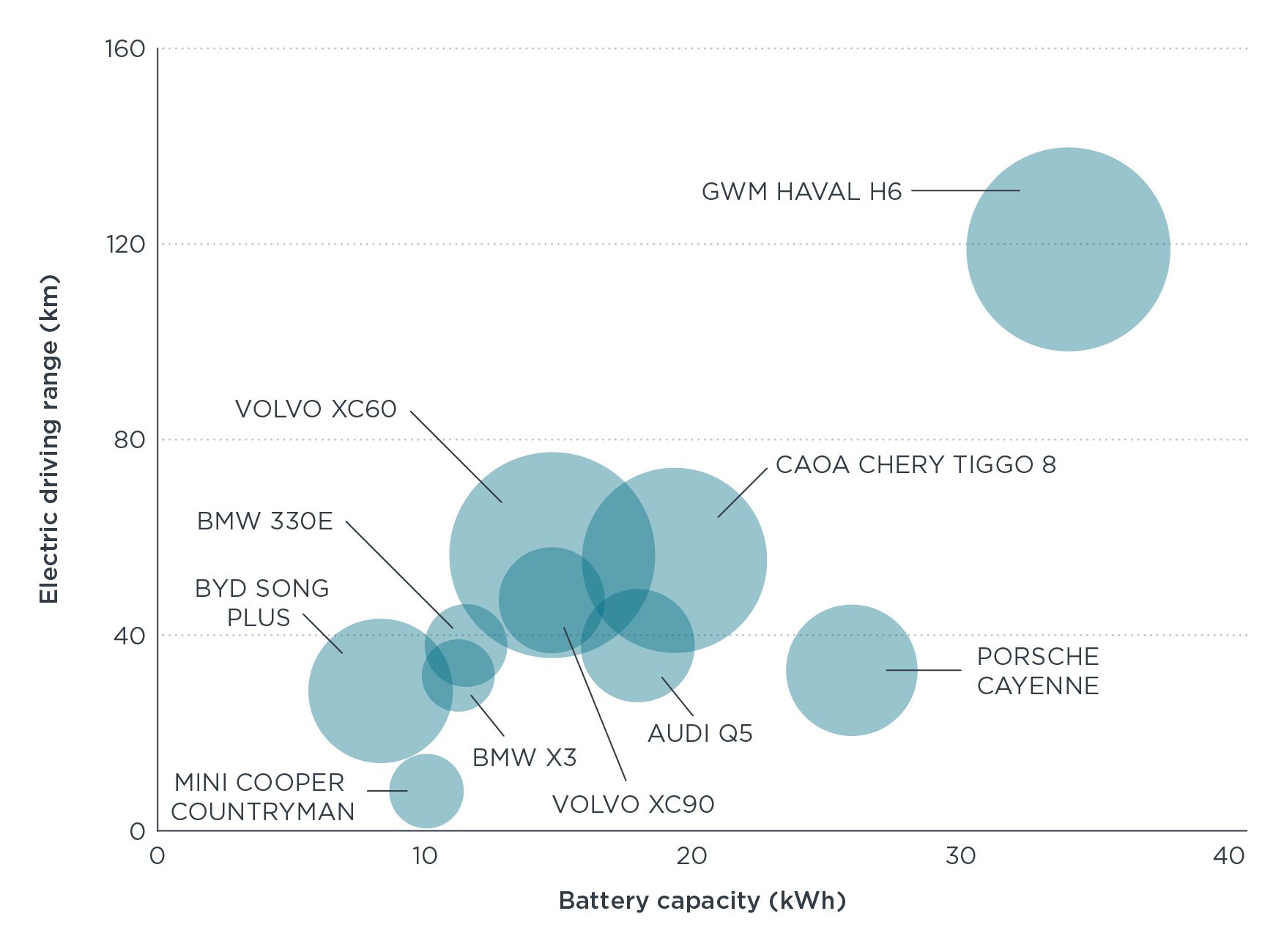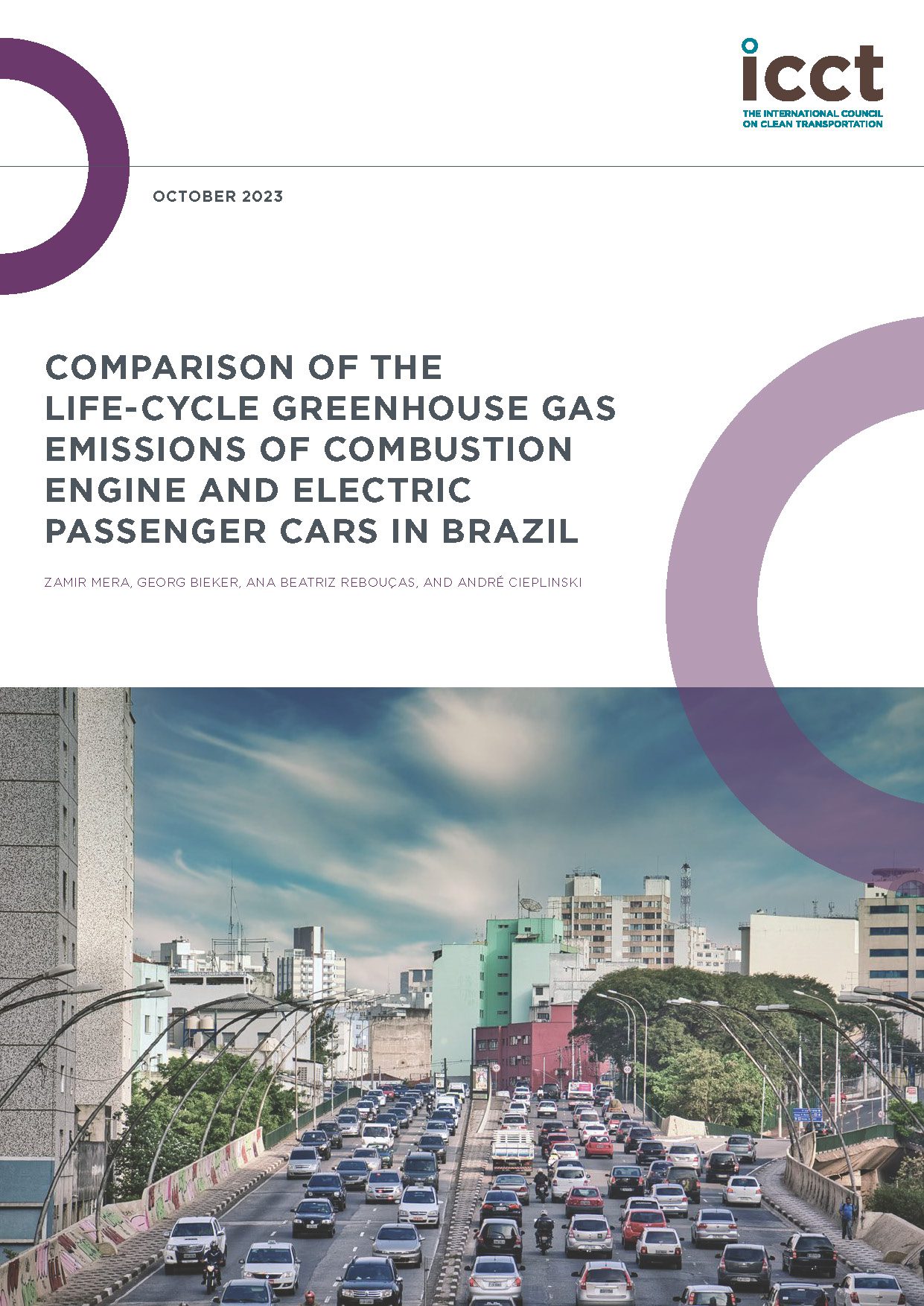Os riscos da aposta em carros híbridos plug-in flex-fuel no Brasil
Blog
The risks of betting on biofuels with flex-fuel plug-in hybrid cars in Brazil
As the world’s largest vehicle markets move toward electric vehicles to decarbonize road transportation, many legacy automakers support doubling down on existing efforts to use biofuels in Brazil, and they’re focusing on using them in plug-in hybrid electric vehicles (PHEVs) as an alternative to battery electric vehicles (BEVs). Additionally, Brazil’s new vehicle emissions regulation (MOVER) will offer tax discounts (until 2026) exclusive to hybrid vehicles that could be larger than the discounts granted for vehicles that meet energy-efficiency targets. Although such support is sometimes tied to assertions of environmental benefits, research by the ICCT shows that PHEVs have embedded climate risks that could compromise the country’s goal of reaching climate neutrality by 2050.
First, our analysis shows that ethanol-gasoline flex-fuel PHEVs have less greenhouse gas (GHG) emissions mitigation potential than BEVs. The same is true for hybrid electric vehicles that don’t plug in, and for these, life-cycle emissions are estimated to be higher than PHEVs when using the same fuels.
Figure 1 highlights the results from our life-cycle assessment of passenger cars in Brazil. It compares medium-segment internal combustion engine vehicles (ICEVs), PHEVs, and BEVs sold in 2023 (left) and those projected to be sold in 2030 (right). For ICEVs and PHEVs, the three rows represent, from top to bottom, cars operated with (a) 100% gasoline C (E27), (b) the market average of gasoline C (E27) and ethanol, and (c) 100% ethanol (E100). The analysis did not consider flex-fuel PHEVs sold in 2023 because none were available. Emissions from electricity production for BEVs and PHEVs were calculated using the current and projected national grid emissions, including power plant construction and transmission, distribution, and charging losses.

Figure 1. Estimated life-cycle greenhouse gas emissions from medium segment ICEVs, PHEVs, and BEVs in Brazil, for models sold in 2023 and projected to be sold in 2030. The three rows of bars for ICEVs and PHEVs represent, from top to bottom, vehicles operated with (a) 100% gasoline C (E27), (b) the market average sales of gasoline C and ethanol, and (c) 100% ethanol (E100). For BEVs and PHEVs, electricity production emissions correspond to the national grid mix. Source: Mera et al. (2023).
For 2023 models, PHEVs correspond to about 20% fewer emissions than ICEVs when both are operated solely with gasoline C. However, when compared with ICEVs with the average gasoline-ethanol use in Brazil, current PHEVs’ emissions are only 3% lower. ICEVs operating exclusively on ethanol correspond to fewer emissions than gasoline PHEVs over their life cycles. In contrast, current BEVs have estimated life-cycle emissions that are 66% below ICEVs with market average ethanol-gasoline consumption and 65% less than current gasoline PHEVs.
For projected 2030 flex-fuel PHEVs using the market average gasoline-ethanol mix, we estimated the life-cycle emissions to be 17% below ICEVs. The lowest emissions for PHEVs are achieved by combining 100% ethanol with an optimistic electric drive share of 55%; this results in 87g CO2 eq./kmg CO2 eq./km and that is still twice the life-cycle emissions estimated for a corresponding BEV.
These results alone cast doubts over the climate benefits of flex-fuel PHEVs in Brazil. And there’s more.
ICCT studies regarding the real-world operation of tens of thousands of PHEVs in Europe and the United States showed that average PHEV owners operate less on electric drive than regulators previously assumed. In Europe, for vehicles with a type-approval electric range of 40 km to 75 km, the official type-approval values assumed electric driving shares of 70%–85%. In real-world operation, however, the average electric driving share was found to be only about 45%–49% for private cars and about 11%–15% for company cars. As a result, the real-world fuel consumption of PHEVs was found to be on average three and five times higher for private cars and company cars, respectively, than type-approval values. In the United States, electric drive shares were found to be 26%–56% lower than assumed by the Environmental Protection Agency’s labeling program, and this contributed to the real-world fuel consumption being on average 42%–67% higher. Other studies also identified significant differences between the electric drive shares of PHEVs in real-world situations compared with previous type-approval values, and in 2023, the European Commission reduced and the U.S. Environmental Protection Agency proposed reducing the electric drive share assumed in type-approval toward values to be closer to real-world use.
Would similar real-world drive shares be expected in Brazil, also? Yes. Figure 2 shows Brazil’s 10 best-selling PHEVs during the first two quarters of 2023 and includes the battery capacity (x-axis) and the electric driving range (y-axis), the latter of which we calculated by considering a reduction of 30% in type-approval values to reflect real-world range. The size of the bubbles corresponds to sales.

Figure 2. Battery capacity and electric driving range of the 10 best-selling PHEVs in Brazil. Source: ABVE, ten best-selling PHEVs between January and June 2023.
The mean electric driving range of these vehicles, which are mostly large, luxury SUVs that are imported, is 44 km. That’s similar to the average electric range of PHEVs in Europe and the United States. This range can cover most urban trips, but frequent charging would be necessary and that could favor the use of combustion engines. Indeed, as there are fewer charging points available in Brazil, it’s unlikely that PHEV models sold in Brazil will realize a higher electric driving share than observed in Europe and the United States, at least in the near term.
Policies could increase the electric driving share of PHEVs, including those that establish maximum fuel tank size and minimum electric ranges, require home charger installation upon purchase, and link tax incentives to real-world use and emissions data. But even still, the choice of fueling a flex-fuel car with gasoline and ethanol determines its emissions. In 2020, hydrous ethanol was 35% (by volume) of the total sales of fuels for otto cycle light-duty vehicles in Brazil. Gasoline C (E27) is a blend of 27% anhydrous ethanol and 73% gasoline. In total, hydrous and anhydrous ethanol was 52% of the national demand, by volume, in 2020 and about one third of it in energy. That means only one-third of the fuel demand from the national passenger car fleet was supplied by hydrous ethanol (E100). More 75% of the national car fleet, and 92% of those sold after 2013, are flex-fuel cars and these could be fueled with ethanol exclusively. Yet, over the past few years, ethanol consumption has stagnated while gasoline sales increased.
As this all shows, there are limits that flex-fuel PHEVs would impose on Brazil’s climate ambitions. Even the availability of flex-fuel PHEVs is not yet guaranteed, particularly for smaller, less-expensive models. Only a few PHEV models are expected to be produced domestically in the near future and they are luxury SUVs. Government incentives favoring this decarbonization pathway like those announced in the new MOVER program may result in only a small reduction of emissions if PHEVs have a low real-world electric drive share. That could, in turn, require more abrupt action to decarbonize the country’s on-road vehicle fleet over a shorter period, if Brazil is still to meet its climate goals by 2050. Effective public policies for transportation decarbonization differentiate incentives based on real-world emissions, and BEVs have far higher mitigation potential than PHEVs.
Author
Related Publications
COMPARISON OF THE LIFE-CYCLE GREENHOUSE GAS EMISSIONS OF COMBUSTION ENGINE AND ELECTRIC PASSENGER CARS IN BRAZIL
Presents a life-cycle assessment (LCA) of the greenhouse gas (GHG) emissions from passenger cars with different power train technologies in Brazil.


